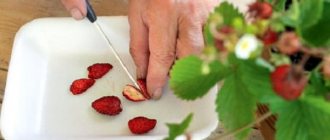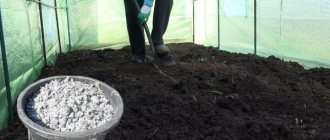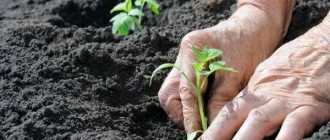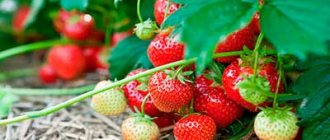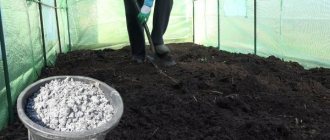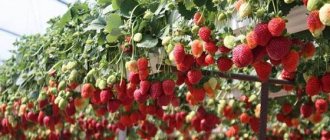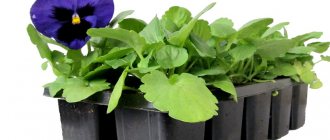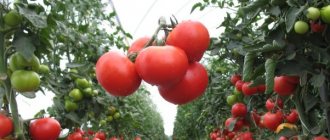Every gardener dreams of growing pomegranate in his own garden. This tree, unpretentious in natural conditions, grows and develops well in subtropical and tropical climates. It is not easy to create the necessary conditions for obtaining juicy fruits in more northern latitudes, but the result is worth trying.
A rich pomegranate harvest is harvested in regions with hot climates
Taxonomy
The genus Punica L. from the family Punicaceae is represented, according to P.M. Zhukovsky (1971), by two species, of which one is endemic only to the island of Socotra, and the other (P. granatum) lives in the wild in Western Asia, Transcaucasia, Dagestan, in Central Asia, Iran, Afghanistan, Asia Minor.
The species P. protopunica Ralf from Socotra Island in the Indian Ocean has a dry fruit and is not related to the origin of the cultivated pomegranate. Wild P. granatum differs from cultivated ones in the small size of its fruits.
E.N. Sinskaya (1969) calls Western Asia, which includes the territory of Turkey, Southern Armenia, Azerbaijan, Iran, part of Turkmenistan and Afghanistan, the homeland of pomegranate. The northern border of the range, according to F.Kh. Bakhteev, reaches the southern outskirts of Central Asia (Uzbekistan, Tajikistan) along the Caspian Sea and along the southern spurs of the Greater Caucasus Range in Transcaucasia.
The genus Punica arose at the end of the Cretaceous period, or at least four thousand years ago, even before the appearance of almonds, apricots and peaches in cultivation. According to E.V. Wulf and O.F. Maleeva, pomegranate was bred in Babylon five thousand years ago. In the CIS, the pomegranate culture dates back at least two thousand years in Central Asia.
The modern cultural territory covers almost all areas of the subtropical zone of the globe and the tropics in a strip from 41° south latitude to 41° north latitude. The main cultivation areas are Mediterranean countries.
Chemical composition
The pomegranate fruit consists of three parts: peel, seeds and juice. The main components of pomegranate juice are:
- Sugar is one of the main components of pomegranate juice. The main part of it consists of monosaccharides (glucose, fructose). Sugar content varies depending on growing conditions (from 10 to 17.5%);
- acids are one of the quality indicators of pomegranate juice. The acid content of different varieties of pomegranate ranges from 1.7 to 2.6%. To a greater extent they are represented by lemon, to a lesser extent by wine, apple and amber;
- tannins contained in pomegranate juice determine its astringency. Their content in different varieties and depending on the climatic conditions of cultivation ranges from 0.8 to 1.1%.
Pomegranate juice contains vitamins: C - within 7.4-9%, B1 - up to 0.4 mg%, B2 - up to 0.3 mg%, folic acid, P-active substances. Protein substances in the juice reach 2%, the amount of amino acids ranges from 60 to 95 mg%. Minerals in the juice make up about 0.2% (iron, manganese, phosphorus, magnesium, silicon, chromium, aluminum, etc.).
The peel of the fruit contains 19-30% tannins, up to 6% pectin, up to 25 mg% vitamin C, up to 1.65% various alkaloids.
Meaning
They are consumed fresh, as fruit, as seasonings for dishes - juice, and also for making drinks, punches, and wine. The fruits are a source of citric acid.
O.P. Kulkov (1986) quotes an expression from ancient works: “Eat pomegranate fruits. These fruits save a person from envy and hatred.” By boiling the juice, nasharabi sauce is prepared - a seasoning for Caucasian dishes.
Among the medicinal properties, the anthelmintic effect of pomegranate tree bark should be highlighted. To expel tapeworms, soak 40-50 g of bark for 6 hours in 400 ml of water, then boil until half of the liquid evaporates. The strained broth is drunk within an hour, and after half an hour, 15 - 20 g of Glauber's salt is taken.
An overdose of bark causes dizziness, blurred vision, and weakness, so if these signs appear, you should consult a doctor.
An anti-inflammatory effect is achieved by drinking a decoction of 5 g of crushed fruit peel and 100 ml of water. The strained broth is taken 3 times a day, 1-2 teaspoons before meals.
Burns are treated with juice and powder from the peel of the fruit. Powder from the peel has a strong astringent effect; it is prescribed for enterocolitis at a dose of 0.75 g 3 times a day. Hippocrates prescribed pomegranate juice for stomach pain, and the peel of the fruit for dysentery. The Arabs used pomegranate for headaches (L.Ya.Sklyarevsky, 1975). In Georgia, a decoction of pomegranate flowers is drunk for diarrhea, and water infusions of pomegranate flowers and peel are a good hemostatic agent (A.D. Mikeladze, 1988). E.V.Wulf and O.F.Maleeva (1969) also note the medicinal value of the bark of the roots, seeds and buds of pomegranate.
Pomegranate is an interesting crop in decorative terms. Some of its varieties have double flowers, ranging from almost white to bright red flowers. Since it blooms almost all summer, its decorative value becomes more significant.
Properties of pomegranate: harm and benefit
Useful properties of pomegranate
Pomegranate is one of the healthiest fruits. The fruit contains vitamins P, C, B12, B6, fiber, sodium, iodine, phosphorus, iron, potassium, manganese, calcium and magnesium. The composition of pomegranate juice includes sugars - fructose and glucose, malic, tartaric, citric, oxalic, succinic, boric and other organic acids, sulfate and chloride salts, phytoncides, tannin, tannins and nitrogenous substances.
Due to the fact that pomegranates contain all these substances that are very useful and necessary for the human body, they have healing properties. Such fruits help quench thirst, strengthen the nervous system, vascular walls and immunity, as well as the formation of red blood cells and the production of hemoglobin. For a long time, an infusion of the flowers and fruits of this plant has been used as a hemostatic agent. Elderly people who have undergone surgery are recommended to eat pomegranate to quickly restore strength. It contains a lot of vitamin K, which is necessary for normal metabolism in connective tissues and bones, and in particular for the absorption of calcium.
This plant helps slow the development of osteoarthritis, while it eliminates swelling and inflammation of cartilage tissue. Pomegranate juice, among other things, normalizes blood pressure, and it is recommended to drink it as a hematopoietic agent for diseases of the heart, kidneys, liver, circulatory system or lungs. This juice also contains estrogens, which help alleviate menopause and also fight insomnia. It is very important for vegetarians to include pomegranate in their diet, since its juice contains 15 amino acids, and almost half of them can be found mainly in meat. Thanks to the fact that a vegetarian will regularly eat pomegranate, he will not feel a lack of animal proteins. The juice also has choleretic, anti-inflammatory, analgesic and diuretic effects on the body. This plant is also rightfully considered an excellent remedy for scurvy, uric acid diathesis, atherosclerosis, headaches and gastrointestinal disorders. Experts recommend regularly drinking the juice of this plant for people who live in an area of high radiation, have been exposed to radiation, or work with radioactive isotopes. It is also recommended to drink it for anemia, hypertension, malaria, bronchial asthma and diabetes. The peel of the fruit contains alkaloids, so it is used as a powerful anthelmintic. A decoction of the peel is used for inflammation of the kidneys, eyes, liver and joints. It is also used for intestinal disorders and for gargling a sore throat. The powder prepared from the peel is lightly fried in cow or olive oil, the resulting mixture is used for burns, abrasions and cracks, and also as a mask for oily skin.
Pomegranate seeds are a powerful remedy that increases intestinal motility. They also contain very valuable oil, which contains fat-soluble vitamins E and F, which promote rapid healing of wounds, rejuvenation, protection of the human body from cancer and regeneration of skin cells. Pomegranate extract promotes rapid restoration of the epidermis exposed to prolonged exposure to sunlight. The dried white films inside pomegranate are added to tea, as they help normalize the nervous system, eliminate anxiety and agitation, and fight insomnia.
In official medicine, decoctions and tinctures are used made from the flowers, bark, fruits, peel and seeds of this plant, which help with stomatitis, burns, anemia, diarrhea, conjunctivitis and other diseases.
Pomegranate peel and seeds, is it worth throwing away 12 unique healing properties of pomegranate peel
Contraindications
Pomegranate juice should not be drunk if you have a peptic ulcer of the stomach or duodenum, or if you have gastritis with high acidity. If necessary, the juice can be greatly diluted with water. Since pomegranate contains a lot of acids, it can cause destruction of tooth enamel. In this regard, when you eat a pomegranate or drink the juice, your teeth should be thoroughly brushed and rinsed. Since this fruit has a constipating effect, it can cause constipation in people with digestive problems. Remember that the peel contains toxic substances, so a decoction from it can be taken only after consulting a doctor. In case of an overdose of the decoction, a significant increase in blood pressure, vertigo, sharp deterioration of vision, weakness, convulsions and irritation of the mucous membrane are observed.
Indoor pomegranate - how easy it is to care for it at home
Biological features
Deciduous plant - a shrub or tree up to 3-5 m high, lives up to two hundred years. The shoots are red, the leaves are located opposite. The shoots are up to 25-40 cm long, ending in thorns that fall off, and two buds remain at the ends of the shoots.
In the middle part of the shoots, in the year of their formation, growths of 0.5-12 cm appear, which V.A. Kolesnikov (1973) calls spears. The number and growth force of spears depend on the age of the bush, variety and growing conditions. Garnet is a fast-bearing breed. The first fruits appear in the second year after planting. Usually the fruits are laid, according to S.A. Smirnov (1968), on short fruiting shoots (ringlets), which produce flowers and then fruits at the tops. Most of the fruit-bearing shoots dry out after harvesting.
Pomegranate flowers are formed only on the current year's growth. Flowers are regular in shape, separate-petaled, single or collected in 3-4 flowers together (less common). There is one pistil, often underdeveloped, and there are many stamens.
Based on the shape of the pistil, pomegranate flowers can be divided into two groups:
- bell-shaped, short-pistillate: the style is short, the stigma of the pistil is located below the area where the anthers are located. Such flowers do not form ovaries and fall off, although they have a decorative appearance;
- pitcher-shaped, long-pistillate flowers: the style is long, the stigma of the pistil is located above the area where the anthers are located. Long-pistillate flowers usually bear fruit after pollination.
Typically, long-pistillate flowers appear first on the previous year's wood. In very cold winters there are few of them. After some time, the flowers of the first group bloom in large numbers, and then again the flowers of the second group on the shoots of the current year. Flowers of the second group of the first flowering period produce large, high-quality fruits. Flowers of the same type on shoots of current growth form ovaries and produce fruits, but in short summer conditions they are smaller and do not have time to ripen due to the drop in temperature in September-October and the onset of autumn frosts. Even covering a pomegranate with film does not protect it from frost, and the growing season of the plant stops.
The better the pomegranate is cared for (watering, fertilizing, removing unnecessary shoots, loosening the soil, etc.), the more long-pistillate flowers of the first flowering period and, accordingly, fruits appear on it. And the earlier they appear, the larger the fruits grow. The number of flowers on one plant is from 400 to 6000, including long-pistillate flowers - 5-20%. Pomegranate is pollinated by bees.
The fruit is a berry (pomegranate) with a thick peel, weighing up to 500 g or more. The fruit is filled with numerous seeds - up to 1200 pieces. and more; they are located in 6-12 chambers, or nests, located in two tiers. The seeds are oblong, ribbed, soft or hard, juicy, depending on the variety.
The color of ripe fruits ranges from pale yellow to dark crimson. The reason for the formation of small pomegranate fruits is late flowering, insufficient amount of pollen on the stigma, as well as defects in some of the ovules of the ovary. Fruit growth continues until the leaves turn yellow. Fruits often crack, especially with changes in soil and air humidity.
At the base of the bush stems, growth shoots appear annually from dormant buds, greatly thickening the crown. They should be removed.
A feature of shoot growth is continuity during the growing season with some weakening of intensity in the hottest time of the year. The growth of shoots begins with the appearance of the first leaves and continues until autumn. The number of growing shoots is greatest 2-3 weeks after the start of growth.
About 90% of all shoots appear on one to two year old branches. Shoots are formed of different sizes.
The shoots are large - up to 1 m or more long - often grow until autumn, forming branches of up to four orders of branching; branch length is 7-40 cm.
Medium shoots - from 10 to 40 cm - finish growing in length during the period of mass flowering, and the next year most of the flowers from the flowering (ring, spear) lateral growth appear on them. Small shoots - up to 10 cm long - without branches, well leafy, stop growing before flowering.
Pomegranate plants grown from seeds begin to bear fruit in the third or fourth year, and those propagated by cuttings - already in the second year.
Pomegranate does not have specific pollinating varieties, but it is better to plant several varieties to obtain a high yield. From flowering to fruit ripening, 120-160 days pass, and the fruits ripen at different times.
The pomegranate root system is shallow, but widespread in the horizontal direction, 1.5-2 times the diameter of the above-ground part. It is located in the surface layers of the soil at a depth of 0.1-0.8 m, and only a small part of it penetrates vertically to 1.5-2 m. According to B.S. Rozanov, some of the roots can penetrate to a depth of 2-3 m, Moreover, in the first year when grown from seeds, the plants have a slightly branched tap root.
Possible problems
If you do not care for the bush correctly or do not provide it with suitable growth conditions, then problems may arise with it:
- Yellowing of the tree . This problem is very common. First, the bush must be carefully examined for the presence of harmful insects, in particular spider mites. If there are no pests, then the bush most likely turns yellow due to the excessively high air temperature in the room. Yellowing may also be due to insufficient moisture in the soil mixture, but in this case dark spots form on the leaf blades.
- Flying leaves . The flying of leaf blades may be a consequence of their yellowing, and this may be due to the fact that pests have settled on the bush, for example, spider mites, or the plant is affected by some disease, as well as due to excessively poor watering or the fact that in the room very hot. The loss of leaves may also be due to the fact that the plant is preparing for a dormant period, because it is deciduous. In this case, the process is completely natural and there is no need to be alarmed.
- Drying of the tree . Drying of the foliage may be due to the fact that the air humidity in the room is excessively low or to problems with the root system that arise when the tree is not watered correctly. In this case, the substrate in the pot should be sniffed; if it has a strong smell of mold, then the bush will need to be transplanted into a fresh soil mixture. During replanting, carefully inspect the root system of the bush and cut out all rotten areas. Wounds on the surface of the root system must be sprinkled with coal powder.
Requirements for growing conditions
Lighting and temperature
Light and warmth are the main conditions for the ripening of pomegranate fruits. In years with hot, dry summers and warm, long autumns, the pomegranate fruits on last year's branches have time to ripen. Pomegranate requires at least 3000 degrees for the fruit to fully ripen, which is ensured when grown in Krasnodar conditions.
The pomegranate vegetation begins at an average daily temperature of 10-12°C and ends at the same temperature in the fall. Mass budding occurs when the temperature reaches 16-18°C, the period of fruit development is 120-160 days, depending on the variety and weather conditions. The plant's dormant period is unstable and depends on weather conditions and the conditions of its maintenance when grown indoors.
It grows well in places where in winter the temperature drops no lower than minus 12-14° (sometimes up to 16-18° below zero), therefore, in the conditions of the south of Russia, it needs protection in winter, namely, it is most often bred in a digging crop. Pomegranate flowering begins in June, and fruit ripening ends in October-November. Therefore, to obtain full-fledged fruits in the Donbass, a mandatory film cover is required in the last weeks of the growing season - October-November.
Spring frosts due to the late flowering period are not dangerous, but autumn frosts can damage the fruits due to their late (October) ripening period if harvesting is delayed. Seed propagation increases the frost resistance of plants, which is important for the conditions of southern Russia. Hot summer and especially autumn accelerate the ripening of fruits.
Humidity and soil
Pomegranate is undemanding to soil; it grows well on crushed stone, sandy loam, rocky and even solonetzic soils, although loamy and alluvial soils are considered best for it. Of course, it bears fruit better on fertile, moisture-absorbing, well-drained soils than on excessively saline and waterlogged soils. Pomegranate is relatively drought-resistant, but at the same time tolerates high soil moisture.
According to V.P. Ekimov (1955), with a precipitation amount of 500-600 mm and an even distribution, pomegranate bears fruit well. A.D. Mikeladze (1988) distinguishes the pomegranate’s ability to tolerate dry air well with a high supply of soil moisture. If there is little water in the soil, the fruits become smaller and their quality deteriorates.
V.A. Kolesnikov (1973) points to pomegranate’s good tolerance to high soil moisture. O.P. Kulkov (1986) emphasizes the moisture-loving nature of pomegranate, as evidenced by the conditions of its natural growth in places with sufficient soil moisture, albeit in the arid zone of Western Asia.
Excess moisture also has a negative effect, since in this case there are few fruits, and of poor quality, and the growing season greatly increases.
Fruit growers in Turkey say about pomegranate: “Feet in the water - head in the sun,” since it is quite light-loving and does not grow and bear fruit well in the shade, under the canopy of trees. The heat resistance of pomegranate is higher than that of figs. Its salt resistance is also high: it bears fruit when watered with water with a mineralization of 3-6 g/l.
Description of the plant
The pomegranate tree lives almost like a person, up to 60 years. It reaches a height of 6 meters. Its leaves are small, light, oval in shape. The flowers resemble orange bells and begin to bloom in June.
The plant's homeland is subtropics, so in the fall pomegranates are planted in open ground only in those areas where the temperature never drops below -17 degrees. Pomegranate does not require abundant moisture unless complete drought occurs. There are also no special claims to the soil; it grows even in steppe regions, while withstanding the movement of sand masses.
Reproduction
Pomegranate propagates by seeds, root shoots and, most often, cuttings.
Propagation by seeds
Seeds remain viable for six months. When sown in spring, they emerge in the same year, after stratification from December. Practicing gardeners can use this method to obtain frost-resistant plants, but it must be taken into account that the quality of the fruit is not preserved during seed propagation. According to D.M. Aliyev, seeds do not need stratification and germinate at soil temperatures of plus 15 degrees.
Reproduction by root shoots
Propagation by root shoots is best done in the spring. Rooted root shoots are carefully separated from the mother plants and planted for growing or a permanent place in the garden.
Propagation by cuttings
When propagated by woody cuttings, they are harvested from productive bushes in the fall. For rooting, take the middle part of 1-2 year old well-ripened shoots, but not the upper part, which ripens less well and contains less carbohydrates. The diameter of the cuttings should be at least 7-10 mm, length 20-25 cm. The lower cut is made near the bud.
Cuttings 35-40 cm long take root better, the seedlings are taller, but they are inconvenient for planting and increase labor costs and consumption of planting material.
Cuttings are planted in the spring, and before that they are stored in wet sand at a temperature of 3-5 degrees. When planting, leave 5-6 cm of the cutting above the soil and cover its free upper ends. Then the pomegranate is watered. Watering improves the survival rate and growth of seedlings during the growing season. During the summer, the soil is loosened and fertilized with nitrogen 1-2 times.
It is possible to immediately plant cuttings in a trench immediately after cutting them into prepared loose and fertilized soil. The distance between cuttings in a row is 20-25 cm, between rows - 50 cm. The cutting is buried in the soil for its entire length, only one or two buds remain at the top. After planting, the cuttings are watered. At the beginning of spring they begin to grow. It is advisable to fertilize 1-2 times during the summer and regular watering is required in case of dry summers and rare rains.
By autumn, bushes are formed from the cuttings, suitable for replanting next year to a permanent place of growth. Planting of seedlings in closed ground is carried out, most often at an angle of approximately 45° to the horizon to the south. With this planting, it will be easier to cover the pomegranate bushes for the winter, bending them to the ground and tying them to stakes driven into it.
Sowing pomegranate seeds for seedlings
For sowing, select one large container. Make several holes at the bottom through which excess moisture will flow out. Also add a drainage layer of fine gravel, sea pebbles or expanded clay (layer thickness 2 - 3 cm). Next, fill the container with fertile substrate prepared from the following ingredients:
- garden soil - 1 part;
- peat – 1 part;
- river sand – 0.5 parts;
- humus - 1 part.
If you don’t want to waste time preparing such a soil mixture, you can buy a ready-made one designed for growing citrus fruits. Be sure to disinfect it before planting - fry it in the oven at a temperature of +70 - +90 ⁰С (for 30 minutes). Alternatively, you can pour boiling water or manganese solution over the substrate. The thickness of the soil layer in the container should not exceed 5 cm.
Now you can start planting work:
- Moisten the soil and make small holes in it, 2 cm deep. The optimal distance between them is 5 – 7 cm. If you decide to plant pomegranate seeds in separate cups, then make the hole in the middle of the container.
- Place 1 grain in each hole. Sprinkle the planting material on top with a thin layer of soil. There is no need to compact it.
- Cover the dish with a plastic bag or transparent cling film. Place the container/cups in a warm, well-lit area. However, it should not be exposed to direct UV rays.
When planting pomegranate from a seed, seedlings appear after 10–15 days. As soon as most of the grains have sprouted, the film can be removed. Until this time, provide the crops with daily watering and ventilation (2 times a day for 10 minutes). When the seedlings get stronger, harden them off. This can be done by taking the plants to a balcony or loggia (provided that the air temperature is not lower than +10 ⁰C). This way they will be prepared for planting on the site.
Landing
Choose a sunny place protected from the winds, where the groundwater level is not higher than 2 m. It is not recommended to plant pomegranates in depressions where cold air flows.
When covering plants for the winter, they are placed according to the scheme from 2 x 3.5 to 5 x 3 m, but more often 4 x 2 m are recommended. Seedlings 40-50 cm high with good root depth are heavily pruned before or after planting, leaving 4-6 buds to form a bush with three trunks-sleeves. You can plant the plant obliquely to make it easier to dig in for the winter.
Where in Russia can you grow pomegranate?
Where is pomegranate grown in Russia? Where there are hot, long summers and short, mild winters. This is Kuban, primarily Sochi and other coastal areas, and Dagestan. Planting and caring for pomegranates in Crimea will be easier than, for example, in the Rostov region, but in fact you can grow a tree anywhere if you have an equipped greenhouse on the site. In the middle zone, you can cope without greenhouses, carefully insulating the plants for autumn and winter.
Shaping and trimming
You can prune pomegranates both in the fall, during the shelter period, and in the spring. It is advisable to carry out the main pruning during the sheltering period, and in the spring to remove broken or frozen branches
The main requirement is to create a small bush, convenient for covering for the winter, providing favorable conditions for growth and fruiting.
The inclined position of the bush creates different conditions in different parts of it. In the upper part there are fewer shoots than in the middle, but the shoots are large, and here 35-40% of the total growth and up to 20% of the harvest are formed. In the middle part, up to 60% of the growth and about 70% of the harvest are formed.
The lower part is shaded by the branches above, and there is poor shoot growth and few fruits. Three stems are left in the bush, since with a larger number the yield decreases. On each stem, at a distance of 30-40 cm from the base, first-order branches are laid in the amount of 3-4 pieces. for one stem.
The inclination of the stem - approximately 45° relative to the soil surface - makes it easier to cover without a sharp decrease in yield, as with a stronger inclination. Each stem is tilted in an arc. Maintaining this bend makes it easier to cover the bushes and ensure good growth and fruiting.
To increase the productivity of old bushes, restoration of damaged and outdated branches using shoots is used 10-15 years after the start of fruiting.
The bulk of the fruits are concentrated on branches of the third to fifth order of branching, so the bushes are regularly thinned out.
In the upper zone of the bush, in order to avoid exposing the branches and increasing the formation of new shoots in the first order of branching, some branches older than three years are cut out.
In the middle part of the bush, weak, drying branches that extend beyond the crown are removed. In dense areas, branches of the third, fourth or fourth order of branching are thinned out. Dry and weak branches are removed from the lower part of the crown.
Formation using the trench method of cultivation
The formation of pomegranate with the trench method of cultivation must be done in the form of a bush with three to five main branches directed towards one or two sides of the trench. The bush-like formation, which leaves 4-6 well-developed trunks, corresponds most fully to the biological characteristics of the pomegranate. As they age, fruiting shoots are replaced with new ones.
Once every 20-30 years, anti-aging pruning is carried out, during which the entire above-ground part of the plant is removed.
Formation in digging culture
The formation and pruning of bushes in a trenching culture is carried out by forming a bush with three main branches, since when covering for the winter, breakage of the branches, as well as their damping off, is possible. The formation of the bush begins in the spring of the second year after planting.
The largest number of flowering shoots on which fruits develop is formed on branches of medium length that are one to two years old. About two-thirds of the pomegranate bush harvest is formed on them. In the first years of pomegranate fruiting, the bulk of flowering shoots appear on branches of the third and fourth orders of branching; When the plant enters the phase of full fruiting, most of the flowering shoots are formed on the branches of the fourth, sixth and other orders of branching.
It should be noted that the yield of the main branches of pomegranate continuously increases during the first 7-10 years of fruiting; therefore, there is no need to replace old skeletal branches with new ones. The main goal of pomegranate pruning in a trenching culture is the skillful and timely regulation of the growth processes of obliquely located branches of the bush with the possibility of providing better conditions for the growth and fruiting of the branches.
To create the largest number of branches with flowering shoots and maintain the optimal size of the bush, it is recommended to moderately thin out the crown, removing, first of all, intersecting, broken and weak branches, cutting out part of the branches of the fourth to sixth orders, less often, the second and third. Both insufficient and excessive crown thinning does not increase pomegranate yield. Its pruning should be done in the spring, after the bushes open.
Winter hardiness of pomegranate
For a heat-loving plant that feels most comfortable in the subtropics, pomegranate is quite resistant to cold, it can tolerate short frosts down to -15 °C. But, unfortunately, this does not make it truly winter-hardy, and the frost resistance of pomegranate remains very low. Not a single variety is able to safely survive a long, cold winter.
Already at -18 °C the plant begins to freeze out, the entire above-ground part of the pomegranate dies off, right down to the root collar. If the temperature drops even lower, the pomegranate root system also dies. The ideal temperature for pomegranate in winter is not lower than - 15 ° C; in such conditions it feels comfortable.
Soil maintenance in the garden
Pomegranates should be watered abundantly to obtain juicy and tasty fruits.
Without irrigation, the main content of the soil is black fallow, which sooner or later deteriorates the physical properties of the soil and reduces its fertility. The negative effect of black steam can be reduced by applying large amounts of organic fertilizers or sowing legumes (peas, vetch, etc.), provided they are provided with additional water. Sowing alfalfa has a negative effect on pomegranate fruiting.
The application of complete mineral fertilizer (nitrogen, phosphorus and potassium) 100-400 g per bush in the early spring, as well as fertilizing with both mineral and organic fertilizers, has a positive effect on the yield. Our observations show that it is best to combine the use of organic fertilizers with mineral ones.
To increase the effectiveness of fertilizers, they are applied dissolved in water or combined with irrigation. In summer, watering is carried out every 10-15 days.
Covering and opening bushes
Sheltering pomegranate bushes is carried out in the second half of October, during the leaf fall period. Before covering, the soil is watered, but covered with not very damp soil to prevent damping off of the plants. To enhance protection from frost, the bushes are pre-covered with plant material.
Using a beam or pole, the bushes are pressed to the soil into a previously prepared ditch 20-30 cm deep. Then they are covered with plant material, covered with roofing felt and covered with a 25 cm layer of earth. As the bush is fixed in an inclined position, the pole is removed.
The release of bushes from winter shelter is carried out in the spring, after the cessation of dangerous frosts. If the bushes open early, some of the plants may die from early spring frosts; if they open late, the branches may damp out.
The opening process can be divided into the following operations: dumping the surface layer of the earth, clearing roofing material and plant material, leveling the land and burning the plant material.
Pomegranate plants respond positively to the application of mineral fertilizers. Therefore, immediately after opening the plants, it is advisable to feed them with nitrogen-potassium fertilizers.
Shelter for the winter
If the pomegranate tree is young and the trunks are not woody, then when winter comes, the plant may freeze. Therefore, young, well-bending branches are tilted to the ground, pinned with garden pins and completely covered with soil. They leave it like that for the winter. In the spring, they dig it up, remove the pins, and the plant independently raises and straightens the shoots, beginning its vegetative growth.
An adult pomegranate tree is practically not covered, but in severe frosts it is recommended to make fires to warm the branches.
Varieties
In Transcaucasia, the main regionalized varieties of pomegranate include Galyusha pink and Galyusha red, Bala-Mrsal, Nizik-kabukh, Krmyzy-kabukh, Shakh-nar, Vanderfil. All of them are distinguished by large fruits with a beautiful round shape and a bright red or pink color.
A large group of pomegranate varieties is known. Most varieties contain hard seeds in juicy grains. This disadvantage is absent in soft-seeded varieties, but they are distinguished by increased requirements for growing conditions, less resistance to unfavorable factors, and therefore are least suitable for the conditions of Krasnodar.
Early ripening varieties are quite suitable for digging crops in the Kuban fruit zone.
Akdona. An early ripening variety of Uzbekistan and other regions of Central Asia. A large-grained form is known - camel tooth (Tyuyatish). Close varieties are Shirin-nor, Ak-anor, Lo-dzhuar. Tall and compact bush. The fruits are flattened-round or spherical, weighing about 250 g, sometimes weighing 600 g or more. The surface of the peel is shiny, light yellow with a light crimson striped blush. The calyx is small, cone-shaped, with curved teeth. The grains are pink, with elongated seeds. The juice is pale pink, sweet, contains up to 15% sugars and 0.6% acids. The fruits ripen in early October and are stored for up to two months. Productivity is 20-25 kg per bush or more.
Kizil-anor (Kizil-bunch, Surkh-bunch, Surkh-anor, Kzyl-anor). Early ripening variety. The fruits ripen in early October. One of the best varieties of Uzbekistan with flat-rounded fruits of medium size, sometimes large - up to 600-800 g. The peel is thin or medium thick. The grains are medium, dark red. Juice color - from red to dark cherry, sweet and sour taste, sugars up to 15.5%, acids up to 1.9%, shelf life 3-4 months.
Gyuleysha pink (Gulyusha azerbaijani, Gyulosha pink, Gulosha azerbaijani). One of the best varieties of Azerbaijan. Bush up to 3 m high, with straight branches and thorns. The fruits are round or rounded-elongated, with an average weight of 240 g, up to 600 g, with a small narrow calyx and a cylindrical neck. The rind is thin, creamy white with raspberry-pink, pink, and sometimes striped coloring. The grains are dark cherry, medium size. The juice is sweet and sour, containing up to 15.5% sugars and 1.3% acids. Ripens in October, produces 25 kg or more per plant. Keeping quality is average - up to 3-4 months.
Wonderful . A foreign variety with soft seeds and small, sweet fruits that ripen in early October. The color of the fruit is white-yellow with a crimson blush. The seeds are small, the juice is light raspberry. Ripe fruits contain up to 13% sugars and 0.4% acids. Productivity is about 15 kg per bush, fruit shelf life is about 2 months.
Bala-mursal. One of the best varieties of Azerbaijan. The fruits are flattened and round, medium-sized (about 250 g), with a raspberry-red blush. Grains and juice are from red to crimson in color, sweet and sour, contain up to 16% sugars, 1.3% acids. The fruits ripen from the beginning of October. Productivity 20-25 kg per bush.
Based on the taste and nature of use of fruits, pomegranate varieties are divided into 3 groups:
- sweet varieties in which the taste is dominated by sugar, and the acid is felt very weakly. They are consumed fresh;
- sweet and sour, in which sugar and acid combine more or less harmoniously. Used both fresh and for processing;
- sour varieties, in which the acid is sharply felt, and the sugar is almost not palatable. Used for technical processing.
Ak-Dona . It is characterized by large spherical fruits with a yellowish-pink color, pleasant to the taste. The variety belongs to the sweet group. The skin is thin. Together with internal partitions it makes up about 30% of the total weight of the fetus. When cultivated in Crimea, the variety is productive, with an early-medium ripening period.
Qaim nar . Azerbaijani variety. It is also cultivated in Crimea. The fruits are medium-sized (200-250 g) greenish in color with a bright red blush. The taste is sweet and sour, pleasant, with aroma. The color of the juice is dark red. The ripening period is average.
Shoulyansky . The fruits are irregularly spherical in shape with a flattened top of medium size. The weight of one fruit is 200-250 g. The color of the fruit is dark red, the juice is bright red. The skin is medium thick. The taste of the pulp and juice is sweet and sour, pleasant, refreshing. The ripening period in Crimea is October-November. The variety is productive when grown in Crimea.
In Ukraine, the varieties Virovsky and Purpur-Sidet, available in the collection of the Nikitsky Botanical Garden, perform well.
In Central Asia and Azerbaijan, improvement of the assortment is carried out through clonal selection of local varieties, as well as the introduction of promising foreign varieties. The heterozygosity of pomegranate makes it possible to obtain varieties already in the first generation. There are 8 promising forms of pomegranate in Azerbaijan, characterized by increased frost resistance and high yield. These include Mehseti, Dessert Azerbaijani, Vurgun. The Tajik Research Institute of Agriculture recommended 6 breeding varieties. Among the introduced ones are Siyah-Dane, California No. 6320 and Malta.
Grekov S.P. [2] in his book points to varieties tested in the trench culture conditions of Donbass: Kai-achik-anar, grown from seeds imported from Central Asia, and Galyusha, grafted onto the Kai-achik-anar variety with cuttings brought from Azerbaijan. The Kai-achik-anar pomegranate bloomed in the fifth year of planting. However, the bulk of the flowers were on the shoots of the current year. The flowers were mostly short-pistilized and did not bear fruit. The Galyusha variety gave its first harvest in the second year after grafting. Now it bears fruit annually, but in small quantities. The bulk of the flowers are short-pistillate. Therefore, it is advisable to try other varieties of pomegranate.
Home care
Indoor pomegranate is a rather unpretentious plant; caring for it is simple and not burdensome. We will introduce you to the conditions of its maintenance in home premises.
Lighting
Lighting with phytolamp
Good lighting is one of the main conditions for the excellent appearance of indoor pomegranate, its development and constant flowering. In summer it can be taken out to the balcony or planted in the garden. An adult plant does well outdoors in direct sunlight. But young seedlings must be accustomed to the street gradually, leaving them in the sun for no more than two to three hours a day, and at midday it is necessary to bring pots with plants into shaded places. This will avoid sunburn of its young leaves. When placing pots of pomegranates in a room, choose any window sills except in northern directions. At midday, it is necessary to protect plants from direct sunlight, especially young specimens, using blinds or curtains.
This may be interesting: Popular types and varieties of indoor Koleria (Kaleria)
If there is a lack of lighting, as happens in early spring or during prolonged cloudy weather in the summer, we recommend using additional lighting with phyto lamps or fluorescent lamps.
In winter, there is even less natural light, and indoor pomegranate may partially lose its leaves. But if you select sufficiently powerful phyto lamps and organize daylight hours for the flower for at least 12 hours, then it will delight you with its flowering and fruiting even at this time.
Ambient temperature
Pomegranate is a heat-loving plant. In the wild it grows at fairly high temperatures. But indoor specimens are quite happy with moderate temperatures in the range of 25 – 30 °C. during the growing season. If the temperature in the room rises higher, then you should take the flower pot to a cooler place. In summer it is a balcony or veranda in the garden. Spraying with cool water will help in the spring. In a hot and stuffy room, indoor pomegranate will begin to lose foliage and buds and slow down its growth. Ventilate the room, do not allow air to stagnate.
The dwarf pomegranate also does not like low temperatures. At sub-zero temperatures it dies. When the ambient temperature on the veranda or balcony is below 15°C, the flower pot should be brought into the room.
Watering
Water the flower sparingly, and after the top layer of soil in the pot dries well. For irrigation, use settled, soft, room temperature water. If you put a pomegranate to rest during the winter, water it at this time no more than once a month. But this remark is suitable for an adult plant (5-6 years old). A young pomegranate plant will need to be watered once a week. You will begin to water your indoor pomegranate more often and more abundantly in February, when you return the flower to its former bright, warm place on the windowsill. The soil will need to be completely saturated with moisture so that all the life processes of the flower are activated. The flower needs abundant watering before flowering begins. But during the pomegranate flowering period, from May to September, watering the plant should be reduced.
In the wild, it blooms during the hottest and driest period of the year, and excess moisture can cause the pomegranate to drop all its buds. But you shouldn’t forget about watering pomegranates for a long time - prolonged drought will lead to stress to the root system, which can also lead to the complete loss of all buds and loss of decorativeness of the flower.
That is, water indoor pomegranate regularly and when the top layer of soil is completely dry - and everything will be fine.
If fruits ripen on a pomegranate tree, it should be watered with caution in the fall, as excessive watering can lead to cracking of the fruits.
Air humidity
Air humidity should be moderate. If the humidity is too low, we recommend spraying the flower and the surrounding air with cool water. Placing a wide container of cool water next to the pot and wet cleaning the room will increase the humidity. Wipe off dust from the leaves with a damp, clean cloth.
There is also no need for high humidity in the room; frequent ventilation will help reduce it. But drafts are not allowed.
The soil
Everyone knows that pomegranate grows in the wild on poor soils in the arid regions of the Earth. But, to grow a beautiful decorative indoor specimen, you will have to choose a more nutritious soil mixture. It should be loose, moisture and breathable, with a neutral reaction pH=7. Commercial soil for roses and begonias is suitable. At the bottom of the pot there should be a good drainage layer of expanded clay or large river pebbles.
Top dressing
Dwarf pomegranate is grateful for regular feeding. From February to summer, it needs nitrogen-phosphorus fertilizers. At this time, the buds are being laid, the pomegranate is preparing for abundant flowering. Feeding is carried out once every two weeks, not more often. Closer to autumn, fertilizing with nitrogen fertilizers is replaced with potassium fertilizers.
We must remember that fertilizers can only be applied to moist soil, for example, the next day after the next watering. Preferably in the morning or evening hours so that the root system does not get burned. In cloudy weather, you can feed the plant during the day.
If indoor pomegranate is grown for its fruits, then it should be fertilized with extreme caution. It is better to feed it not with mineral fertilizers, but with organic matter, so that excess nitrates do not accumulate in the fruits. If you feed it with purchased fertilizers, choose fertilizers for fruit and berry crops and follow the recommendations on the package. In addition, if a pomegranate is overfed with nitrogen supplements, it will not bloom and there will be no fruit.
Trimming
Pruning indoor dwarf pomegranate has a beneficial effect on its decorative appearance, ability to flower and bear fruit. A pomegranate bush or tree grows very quickly. Over the course of a season, without pruning, it will more than double in volume. At the same time, its numerous thin crooked shoots will form the crown in a chaotic manner. To make the pomegranate look not only neat and compact, but also healthy, it should be well trimmed.
This may be interesting: Indoor Balsam - home care
The pruning procedure is carried out several times a year. The first time is at the beginning of the growing season. After hibernation, if your pomegranate was resting in a dark, cool place, move it to a bright, warm place and cut off all the dry branches, as well as some of the small and unnecessary shoots. To stimulate branching, trim the young shoot above the outward-facing bud, leaving no more than 5 internodes on it. You should not cut the plant too much; it may weaken. Leave no more than 6 skeletal branches, which are stronger.
It is important to know that buds form only on well-developed annual shoots. Try not to break them when pruning!
You can grow pomegranate in the form of a bush with 3 - 5 skeletal branches. But, if you cut off all the root shoots, you will get a pomegranate tree with a low trunk and four to five skeletal branches. Over time, four to five second-order branches are laid on each skeletal branch, and then third-order branches are formed on them. Excess shoots are cut out, as are old branches on which there will no longer be a harvest. Pomegranate sets fruit only on the shoots of the current year.
In the summer, during the active growing season of indoor pomegranates, you can also trim off excess branches - elongated or growing inside the crown. Don't worry - pomegranate tolerates this kind of pruning well.
After flowering, if there are no fruits on the branches, the pomegranate is pruned again for the third time. Remove thin weak branches and thin out the inner space of the crown.
Replanting indoor pomegranate. Suitable pot
It is advisable not to transplant young specimens of dwarf pomegranates into other containers for the first two to three years. When the pomegranates grow and become stronger, and their root system fills the entire space of the pot, transplant your flower into a new, slightly larger pot. Moreover, it must be taken into account that pomegranate roots grow wider than deep. Therefore, the pot is required to be wide, but not very deep. In indoor conditions, pomegranate likes to grow in a cramped pot. Carry out the transplant by transshipment.
It is better to do this in early spring. In a new pot, 2-3 cm wider than the old one, place a layer of drainage made of expanded clay or clean pebbles, a little fresh soil (buy ready-made soil with neutral pH7 in the store, for example, soil for growing roses or begonias). Remove your flower from the old pot along with a lump of root soil. Pomegranate roots grow superficially; excess, depleted soil will remain in the old pot and must be thrown away. Place the pomegranate in the middle of the new pot. Fill the free space with soil, while gently shaking the flower container so that all the voids inside it are filled. For the next three years, each spring, replant your pomegranate into a new container with a slightly larger diameter. At the age of 6 years, indoor dwarf pomegranates are considered mature plants. Now they are rarely replanted, as needed, and in pots of the same size. Or they don’t replant at all, but only replace the top layer of substrate in the old pot with a new one. Typically, a 5 liter pot is enough for an adult plant. A too large pot for pomegranate is not suitable - it will bloom more profusely if the root system in the flower pot is too crowded.
Harvest and its processing
Prolonged growth of fruits is associated with extended flowering periods. To prevent the fruits from coming into contact with the ground, short supports (50-70 cm) are placed under the bending branches.
Unripe pomegranate fruits practically do not ripen after picking. Therefore, it is better to carry out one harvest, avoiding cracking of the fruit. The fruits are carefully cut with pruning shears so as not to damage their lower part.
Before sending for storage, the fruits must be dried for several days in a dry room. Then the fruits are placed in boxes, preferably in 1-3 rows, and placed for storage in rooms with a temperature of 1-6 ° C and a relative humidity of 85-90%.
Fruits of smaller sizes, with burn spots, cracked and other defects are not suitable for storage and must be processed.
For squeezing juice, only grains are used, since the tannins of mozhura reduce its quality. The pomegranate juice squeezed through a cloth using presses or juicers is poured into bottles and left for a day. To prevent fermentation in the juice, you can add 0.05% ascorbic acid (0.5 g per 1 liter of juice).
The settled juice is poured without sediment into an enamel pan using a rubber tube and heated to 70°. Hot pomegranate juice is poured into hot, clean bottles, placed in hot water (70°), left for 30 minutes and sealed.
Fruit harvesting and storage
When growing pomegranate trees in orchards in southern Russia, the harvest is traditionally harvested in October, at the time of maximum accumulation of sugar in the juice. The peel may not be red at all, depending on the variety. It is dangerous to keep the fruits on the branches too long; they may crack. Such fruits cannot be stored for a long time.
Suitable conditions for storing fruits are a well-ventilated, cool room where sunlight does not penetrate. The optimal degree of cooling is up to +2 °C, do not allow sub-zero temperatures.
Diseases and pests
Before covering, pomegranate bushes are treated with 3% Bordeaux mixture. In the spring and summer, plants are sprayed two to three times against scale insects, scale insects, mites, and pomegranate moths. Treatments against the pomegranate moth are carried out before flowering begins, after it ends, and in early August.
Against bacterial and other diseases during the growing season, before and after flowering, spray with 1% Bordeaux mixture. After treatment, trunks and thick branches can be coated with a 20% lime solution.
Mechanical pest and disease control measures include removing fallen and diseased leaves and cutting out diseased branches and burning them. The soil is constantly loosened and kept free of weeds.
